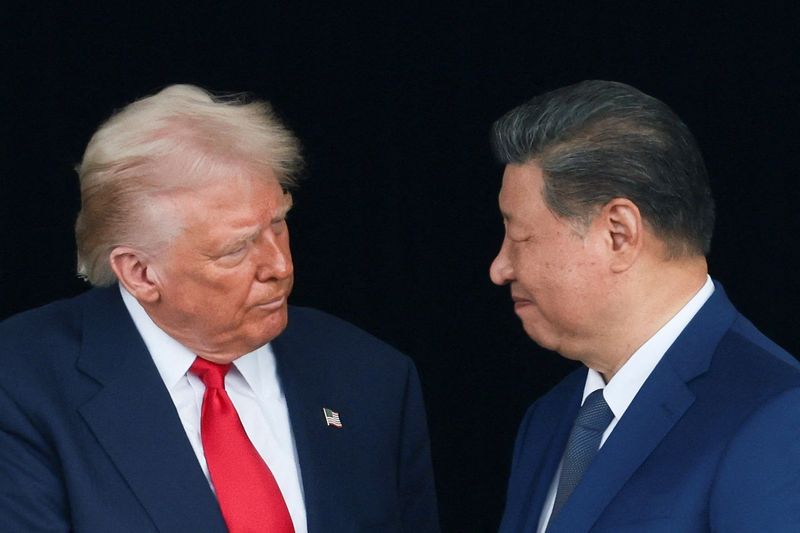
Market analysts are closely monitoring the ramifications of the recent Trump-Xi meeting on global trade dynamics, with the outlook for 2025 under intense scrutiny. This pivotal summit carries profound implications for investor sentiment and geopolitical stability, influencing immediate investment strategies. As of market close, October 25, 2025, initial reactions show cautious adjustments across various asset classes.
Understanding these intricate reactions is paramount for navigating current market volatility. Shifts in consensus views can trigger substantial price movements, making it crucial for traders to stay informed about expert opinions and potential market movements.
Key indicators like currency fluctuations and commodity prices are under intense scrutiny. Analysts are evaluating potential impacts on sectors from manufacturing to technology.
This analysis delves into expert opinions and potential market movements.
Expert Market Analysis
The recent high-level discussions between Trump and Xi have sent ripples through global financial markets, prompting a thorough examination by market analysts concerning their potential impact on trade relations and economic trajectories through 2025. Historically, such geopolitical dialogues have served as significant inflection points, capable of either easing international tensions or introducing fresh layers of uncertainty that can profoundly affect investor confidence and strategic planning. Following past periods of trade disputes, financial markets have demonstrated a heightened sensitivity to perceived shifts in diplomatic postures, leading to notable fluctuations in equity indices, currency valuations, and commodity prices. The current global landscape, marked by ongoing trade negotiations and evolving international alliances, further amplifies the consequential nature of this particular summit. Analysts are actively assessing whether this engagement will foster an environment conducive to sustained global economic growth or exacerbate existing trade frictions, with potential repercussions spanning critical sectors from heavy manufacturing to advanced technology, impacting the overall market outlook for 2025.
From a fundamental analysis perspective, market analysts are dedicating considerable attention to scrutinizing the potential impact of the meeting’s outcomes on corporate earnings and valuation multiples across various industries. Crucial metrics such as revenue growth forecasts for export-oriented companies, profit margins in sectors particularly susceptible to tariffs and trade barriers, and forward-looking statements concerning strategic investment plans are under intensive review. The implications of the meeting for supply chain stability and raw material costs, which are vital for many businesses, are also being rigorously assessed. While specific, quantifiable financial figures directly attributable to the summit’s immediate aftermath are yet to emerge, the prevailing market sentiment is anticipated to influence trading volumes and overall investor confidence in the short to medium term. Concurrently, technical analysts are closely observing how key support and resistance levels on major indices react to the incoming news flow, seeking confirmation of any potential trend shifts or the establishment of new trading patterns.
In a comparative analysis with historical trade dynamics and previous geopolitical events, analysts are evaluating how this meeting might fundamentally reshape the positioning of different economic sectors and individual countries. For instance, emerging markets that have previously benefited from trade diversion strategies are now re-evaluating their future economic outlooks, while established manufacturing hubs are bracing for potential competitive shifts and adjustments in global supply chains. The pharmaceutical and technology sectors, frequently at the forefront of trade disputes due to intellectual property concerns and the strategic importance of innovation, are demonstrating heightened sensitivity to policy shifts. Moreover, regulatory environments within key trading blocs may undergo adjustments depending on the broader implications derived from the discussions. Analysts are drawing parallels to past instances where significant trade agreements or disagreements led to substantial sector-specific performance divergences and shifts in market leadership.
The overarching expert takeaway from the Trump-Xi meeting is a sentiment characterized by cautious optimism tempered with a healthy degree of vigilance. While a segment of analysts believes the very act of dialogue represents a positive stride towards stabilizing global economic outlooks and fostering a more predictable trade environment for 2025, others express concern that the fundamental structural issues underpinning trade relations remain largely unresolved. Retail investors are strongly advised to closely monitor expert commentary, prioritizing concrete policy changes and actionable insights over immediate market reactions. Institutional investors are likely to strategically adjust their portfolio allocations based on evolving risk perceptions and identified opportunities. Key events to monitor closely include subsequent trade data releases, official statements from both governments, and any shifts in major economic indicators. The primary risk continues to lie in the potential for renewed trade skirmishes, while opportunities may emerge for sectors that stand to benefit from a more stable and predictable trade environment, influencing investment strategies for the coming year.
Related Topics:
Trump Xi meeting analysis, Global trade outlook 2025, Geopolitical risk impact, Investment strategies, Market outlook 2025, Trade policy review, Economic forecast, Stock market reaction, US China trade relations

